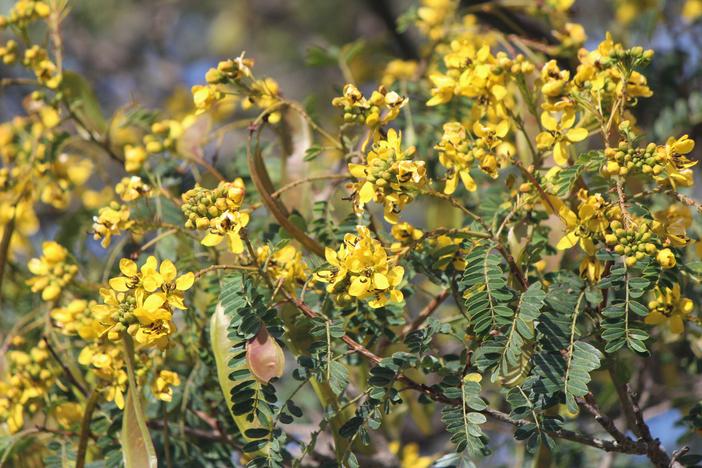Desert Senna
(Senna polyantha)
Desert Senna (Senna polyantha)
/
/

José Belem Hernández Díaz
CC BY 4.0
Image By:
José Belem Hernández Díaz
Recorded By:
Copyright:
CC BY 4.0
Copyright Notice:
Photo by: José Belem Hernández Díaz | License Type: CC BY 4.0 | License URL: http://creativecommons.org/licenses/by/4.0/ | Occurence ID: https://www.gbif.org/occurrence/2862519468 | Publisher: Inaturalist |
















Estimated Native Range
Summary
Senna polyantha, commonly known as Desert Senna, is an evergreen or semi-deciduous shrub native to arid and semi-arid regions of Mexico. It typically grows to a height and width of 3-4 feet (0.9-1.2 meters), with a rounded form and dense foliage. The leaves are pinnate with multiple leaflets, and the plant produces bright yellow, pea-like flowers in the summer, which are moderately showy and attract pollinators. Desert Senna is not particularly noted for its bark or fruit, but its flowers and foliage are the main ornamental features.
Desert Senna is valued for its drought tolerance and ability to thrive in hot, dry climates, making it an excellent choice for xeriscaping and water-wise gardens. It is often used in urban landscaping, as a border plant, or in naturalized areas where low maintenance and resilience to harsh conditions are desired. This shrub prefers full sun exposure and can adapt to a variety of soil types, provided they have good drainage. While it is generally easy to care for, it may require occasional pruning to maintain a neat appearance and to promote new growth. Desert Senna is not known to have significant disease or pest issues, but it should be monitored for common problems that can affect its health and appearance.CC BY-SA 4.0
Desert Senna is valued for its drought tolerance and ability to thrive in hot, dry climates, making it an excellent choice for xeriscaping and water-wise gardens. It is often used in urban landscaping, as a border plant, or in naturalized areas where low maintenance and resilience to harsh conditions are desired. This shrub prefers full sun exposure and can adapt to a variety of soil types, provided they have good drainage. While it is generally easy to care for, it may require occasional pruning to maintain a neat appearance and to promote new growth. Desert Senna is not known to have significant disease or pest issues, but it should be monitored for common problems that can affect its health and appearance.CC BY-SA 4.0
Plant Description
- Plant Type: Shrub
- Height: 3-4 feet
- Width: 3-4 feet
- Growth Rate: Moderate
- Flower Color: Yellow
- Flowering Season: Summer
- Leaf Retention: Evergreen, Semi-Deciduous
Growth Requirements
- Sun: Full Sun
- Water: Medium
- Drainage: Fast, Medium
Common Uses
Bee Garden, Bird Garden, Butterfly Garden, Low Maintenance
Natural Habitat
native to arid and semi-arid regions of Mexico
Other Names
Common Names:
Scientific Names: , Senna polyantha, Cassia goldmanii, Cassia marginata, Cassia polyantha, Pterocassia rubricaulis, Cassia browniana, Pterocassia goldmanii, Pterocassia polyantha,
GBIF Accepted Name: Senna polyantha (Collad.) H.S.Irwin & Barneby